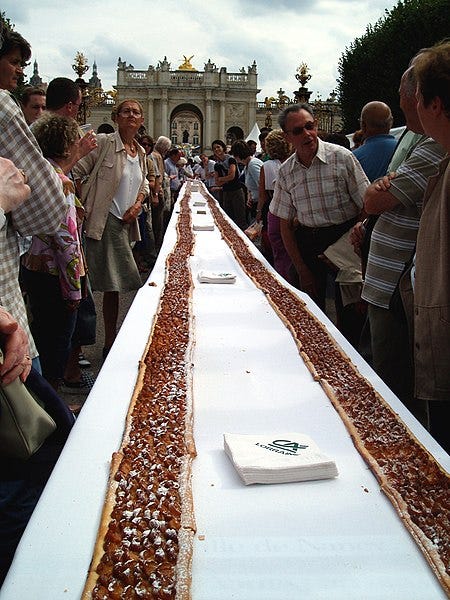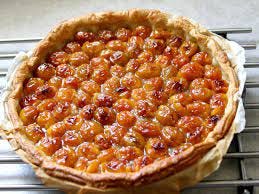Given the produce supplies we get almost year round - of sugar snaps from Peru, strawberries from Mexico, lychees and figs from who knows where - it’s hard to believe there still exist some fruits and vegetables so sensitive to season and place they can’t be shipped without deteriorating in transit.
If you saw ‘Victoria & Abdul’, the movie starring Dame Judi Dench and Ali Fazal, (or just this delightful trailer), you will know that Abdul Karim, played by the Bollywood heartthrob, so impressed the Empress of India with his account of the glory of the mango as ‘the queen of fruit’, that Victoria commanded one be shipped to her from India. This despite Karim’s warning that it wouldn’t survive the journey. Which it didn’t.
These days, there would be no challenge. Mangoes appear in high street supermarkets pretty much year round, the bounty of growing seasons in different countries overlapping. The best, in my view, are Alphonso, the most expensive. Grown mainly in western India, they are named after Alfonso de Albuquerque, the Portuguese conqueror of Goa.
He brought mangoes with him from Brazil on his fleet. When their stones were planted, because of the difference in the soil of Goa they produced this hybrid variety.
Comma-shaped Ataúlfo mangoes from Mexico, named after grower Ataúlfo Morales Gordillo and marketed in the US as ‘champagne mangoes’ with a season running from around Christmas to late spring, are equally delicious. And pricey.
There are other fruits that can’t make it nearly so far from the tree. In France at this time of year, trees bend almost to branch-breaking point under the weight of mirabelles. These are tiny yellow plums as sweet as candy. But unless you live in France, where they are harvested like olives - shaken from the tree into nets, you will probably only be able to taste them in a jam or in eau de vie, a fruit brandy. Mirabelles from Lorraine have been recognized as such a high-quality regional product, they have been given Protected Geographical Indication (PGI) status.
This time of year is also the season for greengages, larger members of the plum family and named ‘Reine Claude’ by the 16th century French king, Francis I, in honour of his wife. Although you have a better chance of tasting those, transportable as they are across the northern hemisphere, they rarely make it to the US. In Washington DC, I used to drive, for a brief period in early September, to find these jade-green plums at the Afghan Mini Market in Springfield, VA. It’s a different matter on the West Coast, where trees dating back to the 1940s are still producing fruit in residential neighbourhoods in the Tamalpais Valley, just north of San Francisco.
Originating in Persia, a greengage seed was found embedded in a 15th-century building in Hereford, north of London. Yet Sir William Gage, 2nd Baronet of Hengrave, is credited with importing greengages into England from France three centuries later, in 1724. Quickly following, they began to be grown in the US and on the plantations of George Washington and Thomas Jefferson. But because more common red and purple plums require far less of a trader’s care and attention, interest in them waned after the 18th century.
It’s a great shame. The difference between the almost tasteless and crunchy ovals you find in supermarkets and the soft, scented, succulent greengage is the difference between a Ford Pinto and a Rolls Royce - although the greengage does explode in the mouth as Ford Pintos were inclined to do in the road when rear-ended. Some people go so far as to dub them the most glorious fruit on earth. But they need maintaining at lower temperatures during transportation than do regular plums, and are far less robust. Neither financially demanding fact appeals to shippers and retailers.
Now, however, there is a quiet revival. Andy Mariani of Andy’s Orchard in California’s Santa Clara Valley, who has developed one of the largest US collections of stone fruits, sells greengages, and ships them overnight.
The world’s longest tarte aux mirabelles, 206.31 metres in length, was served in Nancy, France, on 2nd September, 2006, cut into 4000 portions. You can make this more modest tart with any kind of plum from mirabelles to Reine Claudes and regular reds.
Serves 8
500g/1lb plums, cut in half if regular plums or slit open if mirabelles, and their stone removed
pack of buttery puff pastry
lump of butter - about an ounce, melted
2-4 tablespoons sugar
2-3 tablespoons confectioner's sugar
Preheat oven to 200C/390F.
Bring the pastry to room temperature and roll out as thinly as you can without tearing it. Line a buttered pie tin with buttered baking parchment then drape in the pastry and press it into the mould.
Lay the fruit in circles on top, leaving about 1¼ cm/½ in bare at the edge.
Dab everything including exposed pastry with melted butter. Sprinkle over a couple of tablespoons of sugar.
Bake till the fruit is beginning to caramelise - about 35-45 minutes depending on your oven.
Sieve over a light snowfall of confectioner's sugar. Serve warm, not hot. You don't really need vanilla ice cream or whipped cream. But it never hurts. It’s also delicious cold, especially at breakfast the next day...










Plums are my favourite fruit, I've grown Victoria - reliable croppers and delicious picked at their peak - as well as damsons and greengages. Alas, no Mirabelles, which I adore ... I'm so glad Granny's recipe book has a lot of spare pages left ... (Among other fascinating items, she has a 'cure' for amoebic dysentery!) Lovely to learn more about the history of the mango, in Kenya there was one growing in the yard of the flat we lived in, and in my grandmother's garden. These were very much smaller than the ones we get in the supermarket here, and in Kenya were much preferred to the large ones, more juicy and with sweeter flavour.
I'll try this tart when I've healed from making the last one... sliced my thumb open rather deep with a Victoria plum pit!
I love these hyper-seasonal fruits that don't travel, as I find in an age of produce from everywhere they're a highlight to look forward to. Though I became incredibly sad for my friends across the pond when I discovered there are no sloes in America.